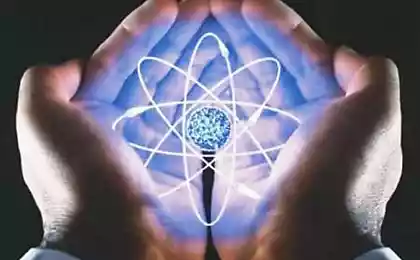528
An effective Union of solar panels and fuel cell
One of the reasons why solar panels are still not acquired the dominant role in the global energy sector is that the materials from which they are made, very short-lived and require constant updates, which increases the cost of energy. These materials are very often overheat and fail or just degrade during use, which reduces their chances in the competition with other renewable energy sources such as wind or hydro.
A group of scientists led by Michael Castle of Bowling Green State University has offered a new solution to this problem in the form of a synthesis of the two types of inorganic nanocrystals, each of which is more sturdy and durable than organic counterparts. In an article published in the journal of Visualized Experiments, the scientists focused on liquid synthesis of two nanocrystals that produce hydrogen and an electric charge when exposed to light.

"The main advantage of this method is the possibility without the use of organic matter directly combining a light absorber and the catalyst," said Michael Castles.
New solar panels combine photovoltaic technology that can generate energy during the day, and the production technology of hydrogen fuel that will power fuel cells at night. This became possible thanks to two new types of nanocrystals that replace the organic molecules traditionally used in the production of solar panels.
Researchers from the group of the castle say: "the Nanocrystals are unique for two reasons: due to their design they combine two very different methods of energy production and they are completely inorganic, making them more durable. The first type of rod-shaped nanocrystals has shape and can produce hydrogen under the influence of solar light. The second type consists of layers superimposed on each other, and has photovoltaic properties"
According to the researchers, the replacement of traditional material on their new brainchild will also allow solar panels to become more sturdy and durable compared to those made using conventional organic materials. Organic compounds are very susceptible to high temperatures and ultraviolet radiation, so replacing their inorganic counterparts, can play in favor of cheaper solar energy.

These crystals not only less sensitive to thermal effects and ultraviolet radiation, but they also do not suffer from degradation problems that are inherent in their organic counterparts. Solar panels made of organic materials very often "exhausted" in the process of operation, and efficiency of nanocrystals can be resumed with a simple methanol "washing".
Thus, the new nanocrystals made from zinc selenide and cadmium sulfide, with addition of a platinum catalyst, can be a major element in the creation of the combined method of energy production from the sun – an effective Union of solar panels and fuel cell. It will supply clean energy 24 hours a day. At the same time, the service life of this technology will be much more than those 20 years that are now standard for conventional solar panels.
Source: /users/104
A group of scientists led by Michael Castle of Bowling Green State University has offered a new solution to this problem in the form of a synthesis of the two types of inorganic nanocrystals, each of which is more sturdy and durable than organic counterparts. In an article published in the journal of Visualized Experiments, the scientists focused on liquid synthesis of two nanocrystals that produce hydrogen and an electric charge when exposed to light.

"The main advantage of this method is the possibility without the use of organic matter directly combining a light absorber and the catalyst," said Michael Castles.
New solar panels combine photovoltaic technology that can generate energy during the day, and the production technology of hydrogen fuel that will power fuel cells at night. This became possible thanks to two new types of nanocrystals that replace the organic molecules traditionally used in the production of solar panels.
Researchers from the group of the castle say: "the Nanocrystals are unique for two reasons: due to their design they combine two very different methods of energy production and they are completely inorganic, making them more durable. The first type of rod-shaped nanocrystals has shape and can produce hydrogen under the influence of solar light. The second type consists of layers superimposed on each other, and has photovoltaic properties"
According to the researchers, the replacement of traditional material on their new brainchild will also allow solar panels to become more sturdy and durable compared to those made using conventional organic materials. Organic compounds are very susceptible to high temperatures and ultraviolet radiation, so replacing their inorganic counterparts, can play in favor of cheaper solar energy.

These crystals not only less sensitive to thermal effects and ultraviolet radiation, but they also do not suffer from degradation problems that are inherent in their organic counterparts. Solar panels made of organic materials very often "exhausted" in the process of operation, and efficiency of nanocrystals can be resumed with a simple methanol "washing".
Thus, the new nanocrystals made from zinc selenide and cadmium sulfide, with addition of a platinum catalyst, can be a major element in the creation of the combined method of energy production from the sun – an effective Union of solar panels and fuel cell. It will supply clean energy 24 hours a day. At the same time, the service life of this technology will be much more than those 20 years that are now standard for conventional solar panels.
Source: /users/104
Closely – not always uncomfortable
Japanese Omotenashi house is the epitome of comfort and environmental friendliness























